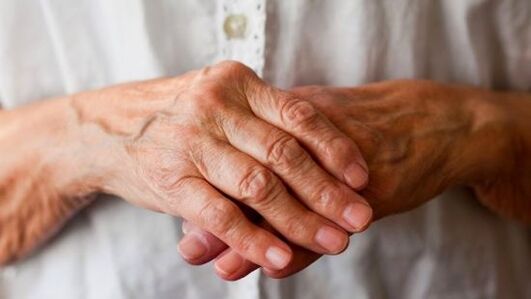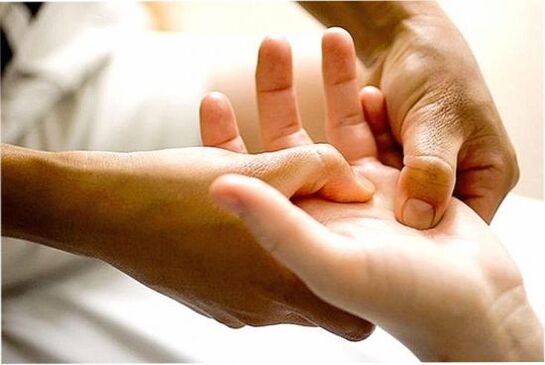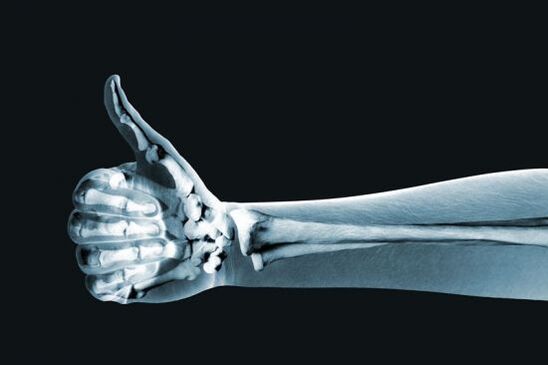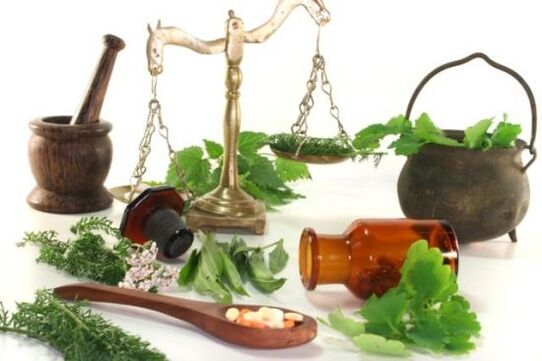When your hands and fingers hurt, this means that the body is signaling joint diseases or internal pathologies. Often the patient tries to solve the problem on his own, without being aware of the danger of becoming disabled in a short time. Information about why pain in the joints of the fingers occurs and what to do is useful for those who have felt the first symptoms of the disease and have close relatives suffering from joint pathology.
Causes
There are a series of diseases accompanied by pain and inflammation of the hand. These include:
Gout Arthritis
The disease manifests itself after the age of 20. The thumbs are the first to suffer the inflammatory process. There is a paroxysmal course of inflammation of the joints. The attack usually begins at night. The joint pain is acute. The area of skin over the affected joint turns purple. The finger becomes hot and difficult to bend. The inflammation lasts a maximum of 10 days. The attack may disappear suddenly, without treatment, but will soon return.
Poliosteoarthrosis
People over 40 years of age are affected: men, less often than women. A distinctive sign of the disease is Heberden's nodules, when the nodules begin to form, swelling and redness of the joints, burning and sharp pain are noted; In some patients, nodules form asymptomatically. With polyosteoarthrosis, the formation of nodules in the joints in the middle of the finger is also observed. Bouchard nodules are spindle-shaped, almost painless, and characterized by slow growth.
Rheumatoid arthritis
The onset of the disease is manifested by inflammation of the joints of the index and middle fingers. Along with the metacarpophalangeal joints, the wrist joints become inflamed, swollen and painful. Pain in the finger joint is especially painful in the morning. Rheumatoid arthritis is accompanied by weakness, joint pain, and fever.

Psoriasic arthritis
The pathology develops in patients with psoriasis. In pathology, pain and swelling in the joints are noted. The pathology has another name: "sausage-shaped" finger. At the same time, all joints and joints of the finger become inflamed. In rare cases, the joints of both hands become inflamed, but in different fingers.
De Quervain's tenosynovitis
The inflammation affects only the thumb. The pain is caused by stress when trying to straighten the elbow towards the elbow. Sometimes your finger hurts for no apparent reason.
Rhizarthrosis
rare pathology. Rhizarthrosis is a chronic form of osteoarthritis. The location is observed at the base of the thumb. The disease leads to deformation of cartilage tissue. The thumb bone becomes deformed, limiting movement of the inflamed joint.
Carpal tunnel syndrome
The pathology is manifested by symptoms:
- The pain is felt on the inside of the thumb.
- My index finger hurts.
- There is a feeling of numbness in the skin of the palm.
- Decreases hand motility.
Without treatment, the nerve loses its ability to function, causing disability.
raynaud's disease
The cause of the disease is a decrease in hair tone. It is manifested by symptoms: numbness, pale skin of the hand, vasodilation, which causes redness of the fingers. Sometimes there is a bluish color, sharp pain and swelling. The pathology is characterized by constant freezing of the hands, which at the last stage of development become bluish or black. Trophic ulcers are often observed.
Injuries
Hand pain most often occurs with bruises and sprains. A bruise on the hand is manifested by the following symptoms: swelling, bluish discoloration or redness of the bruise site, severe pain when trying to move a finger, formation of a hematoma and pathological mobility of the injured finger.

tendonitis
The disease affects a person who constantly performs monotonous movements (sewing, typing, playing the piano). "Writing" cramps occur during the daily stress of writing. The painful syndrome is observed in people suffering from cervical osteochondrosis. Wrist pain is especially noticeable at night. Painful sensations are often accompanied by a crunching sound.
Tingling and numbness appear in the fingers when a person makes small movements with his hands. Repeated overexertion of the hand contributes to trigger finger syndrome. A bent finger is difficult to straighten; If force is applied to straighten it, a click is heard.
Pain due to internal pathologies.
There is often pain in the hand and fingers for reasons unrelated to joint disease. People who suffer from pathologies are at risk:
- cardiac ischemia. In myocardial infarction, the onset of the attack usually coincides with a sensation of pain and tingling in the left hand.
- Diabetes. The pathology leads to a more sensitive state of the hands due to poor circulation.
Pain and numbness are often seen in pregnant women. The following changes cause swelling and pain in the finger joints during pregnancy: increased hormone relaxin, calcium deficiency, pinched median nerve, depression.
Important!Heredity, frostbite of the hands, frequent immersion in cold water and decreased immunity contribute to pathological changes in the hands.
Pain in the fingers of the right hand.
Several fingers hurt at the same time. Half of the painful manifestations occur in the ring and little fingers, and a third in the index and thumb. If you feel pain in all the fingers of your right hand, the problem is related to the blood vessels. Pain in the index finger and thumb indicates spinal pathologies. If the index finger, ring finger and thumb hurt at the same time, this indicates a radial nerve disease. Simultaneous pain in the little finger and ring finger indicates the presence of a foraminal hernia.
The fingers of my left hand hurt
If the pain occurs only in all the fingers of the left hand, look for the problem in the blood vessels. The thumb, index and ring fingers hurt: the radial or middle nerve is affected, the index and thumb, spinal pathology. Pain in the little finger and ring finger occurs with a C5-C6 foraminal hernia. The middle finger joint hurts due to a C4-C5 foraminal hernia.
Which specialist to choose
For any reason your hands hurt, a visit to the doctor is mandatory. If you have post-traumatic pain, you should make an appointment with a traumatologist. If the joints are inflamed or swelling appears, a rheumatologist will help you. When the cause of pain is unclear, a cardiologist and endocrinologist should be consulted.
Diagnosis
It is possible to diagnose pathologies using the following hardware tests:
- Bone scan. The painless procedure allows bone tissue to be studied. The results of the study are recorded on film in 3 screenings.
- Connecticut. The study is carried out using X-rays. The results obtained after computer processing are a series of images with cross sections.
- Electrospondylography. Detects the presence of anomalies in the part of the spine responsible for the functioning of the arms. Pathology is detected at the initial stage of development.
- magnetic resonance. The diagnosis is made using electromagnetic radiation. As a result of the study, longitudinal and cross-sectional images are obtained.

Laboratory methods
To diagnose joint pathology, studies are carried out:
- General urine analysis.. It allows you to identify advanced forms of bone inflammation.
- general blood tests. The study determines the presence of leukocytosis and anemia.
- Biochemical blood test. It determines the greater presence of fibrinogen and sialic acids.
- Puncture. After the affected joint is punctured, the fluid in it is removed for examination. The study is prescribed to accurately determine the cause of the development of pathology; carried out in rare cases.
- Biopsy. A piece of skin tissue is taken to be examined microscopically. With the method, lupus erythematosus and scleroderma are detected.
Treatment
Pain in the hands is treated depending on the reasons that caused it. For exacerbations of arthritis, non-steroidal anti-inflammatory drugs are used. For a normal supply of nutrients from the blood to the joints, the use of vasodilator drugs is necessary. Anti-inflammatory ointments are used for local therapy. Good results are obtained when treating arthritis with ultrasound, electrophoresis and acupuncture.
In osteoarthritis, centrally acting analgesics are prescribed to relieve the patient's acute pain. In addition to relieving pain, these medications have an anti-inflammatory effect. Chondroprotectors: chondroitin sulfate, hyaluronic acid in some cases are taken constantly. Laser treatment has been used successfully in the treatment of osteoarthritis. Significant relief is obtained through physiotherapy procedures: massage, mud therapy.
For gout, taking medications to normalize purine metabolism in the body is indicated. Analgesics are prescribed to relieve pain. Of particular importance is a diet with limited consumption of meat products, fish and alcohol. Rheumatoid arthritis cannot be cured, but it is possible to slow down the destructive process of the joint through the use of anti-inflammatory medications, physical therapy, and surgical methods. Acupuncture and massages have also proven effective.
To treat carpal tunnel syndrome, comfortable working conditions should be created, taking into account the correct position of the hand. For painful sensations, make compresses with chamomile decoction.
Surgical methods
If conservative treatment is not effective, the joint is surgically replaced. The indications for surgical intervention are:
- Injuries with separation of the tendon from the place of attachment to the nail phalanx.
- Arthritis of the hand.
- Fractures and cracks.
- Deep cuts.
- Malignant neoplasms of the hand.

How to treat according to traditional recipes.
Effective folk recipes to combat pain in the hands:
- Recipe number 1. Aloe ointment. Take 20 g of crushed fresh aloe leaf and add 5 g of dry mustard. Mix and cook over low heat for 8 to 10 minutes until you obtain a homogeneous mass. Transfer to a container away from light. The joints of the hands are lubricated in the morning and evening until visible improvement is observed.
- Recipe number 2. Bird cherry tincture. 50 g of cherry bark are poured with 200 ml of vodka. Insist for 10 days without access to light. Lubricate the brushes 3 times a day. The course of treatment is 3 weeks.
- Recipe number 3. Bath with calendula. A tablespoon of dried calendula flowers is poured into 200 ml of boiling water. Prepare the decoction for 15 minutes. to simmer. Treatment procedures continue for 20 minutes. The treatment course is 10 procedures.
- Recipe number 4. Drink from dandelion roots. Then, 1 tablespoon of dandelion roots is poured into 200 ml of boiling water. Simmer for 20 minutes. Drink 1 tablespoon 15 minutes before meals for 14 days.
- Recipe number 5. Three tablespoons of sea salt are heated in the microwave. Wrap with a gauze bandage, apply to the joint and leave for 30 minutes.
The procedures are performed daily for 20 days.
Helpful tips
If you follow the recommendations of doctors, you can significantly help the body relieve joint diseases. If swelling of the hands occurs, jewelry should be removed. In case of injury, it is necessary to keep the hand still and apply a cold compress. If there is pain from exertion, it should be eliminated or significantly reduced. Need to change jobs that require repetitive movements.
You should immediately consult a doctor if the following symptoms occur:
- The post-traumatic pain does not subside, there is stiffness in movements and it is difficult to bend the finger.
- The hand is red and there is heat in the skin area.
- There is a tingling sensation in the hand.
- The phalanges of my fingers hurt.
- The hand or finger becomes numb.

Prevention
To prevent hand pain, you should:
- Include exercises to strengthen hand muscles in your morning exercise routine.
- If repetitive movements are necessary, it is advisable to take breaks.
- Prolonged stay in a position that requires a fixed position of the hands should be avoided.
- Avoid getting your hands too cold.
Pain in the hands is due to several reasons. Pharmacological treatments, physiotherapy, surgical methods and popular recipes are used to relieve pain. To improve your quality of life, it is important to follow your doctor's recommendations.

























